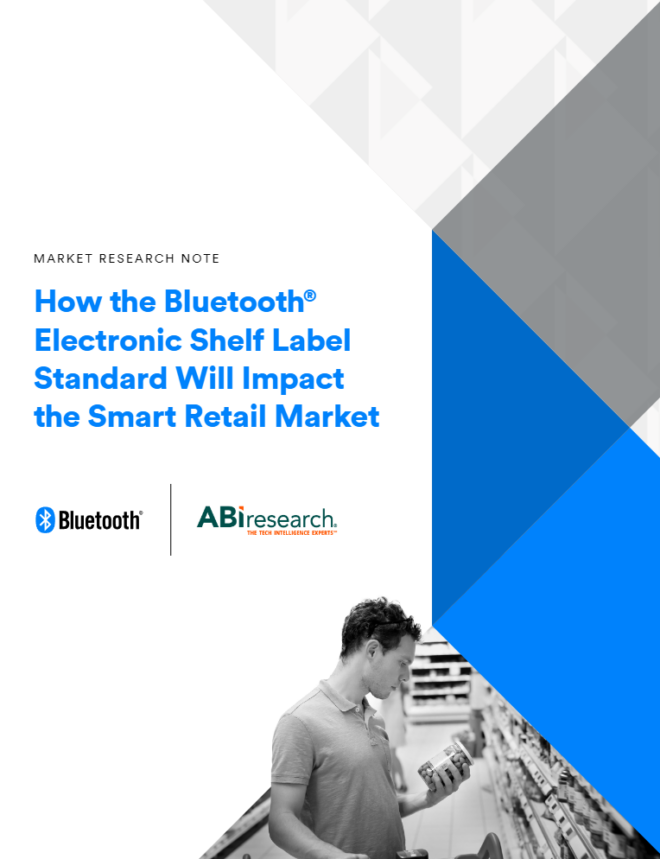A global provider of secure, intelligent wireless technology for a more connected world, Silicon Labs strives to make it easier for developers to solve complex wireless challenges throughout the product lifecycle and get to market quickly with innovative solutions that transform industries, grow economies, and improve lives.
Recently, I met with Petteri Paatsila, senior product marketing manager – retail for Silicon Labs, to discuss their involvement in developing a Bluetooth® standard for electronic shelf labels (ESL) and the effects this standard will have on the market.
Q&A With Petteri Paatsila From Silicon Labs
What has been your involvement in creating a wireless ESL standard inside the Bluetooth Special Interest Group (SIG)?
Silicon Labs has been a driving member of the Bluetooth Special Interest Group’s (SIG) effort to introduce standardized communication for the electronic shelf label (ESL) market. We participated in and contributed to both the creation of the new Periodic Advertising with Responses (PAwR) feature introduced in Bluetooth® Core Specification 5.4 and interoperability testing of the standardized Bluetooth ESL Profile and Service.
What are the requirements for a successful ESL in a retail market?
To be successful in the retail market, ESLs need to fill the needs of consumers, retail employees, and business owners. Consumers care about having the right price information and high-quality displays that are easy to read. The trend here is to increase the number of colors to four or more to provide more information.
For retail employees, a good ESL helps reduce the amount of work needed for price changes, optimizes the click-and-collect process, and simplifies the replenishment process. For example, a bright indication LED light on an ESL helps to drive task efficiency.
For retail business owners, the system’s ROI is important, and ESLs help to roll out price updates and reduce labor costs. Here, seamless price automation, long product lifetime, and support for robust, large-scale networking are the key points.
What is the current state of ESLs, and why is it important to have a standards-based ESL technology?
ESLs are rapidly gaining popularity in the market as their value is recognized by retailers. The standards-based approach provides further confidence for retailers to invest in ESL systems as they can rely on multiple vendors providing interoperable ESLs and network infrastructure. Working with standards-based ESL also allows retailers to include other Bluetooth® features like positioning or tablet/smartphone connection. Additionally, the reuse of an existing network infrastructure, like Bluetooth enabled Wi-Fi access points, can bring additional value as it reduces the cost of network infrastructure deployment.
FEATURED INNOVATION
Bluetooth Electronic Shelf Labels (ESL)
With the introduction of a wireless standard for the electronic shelf label (ESL) market, Bluetooth® technology is helping unlock the next chapter in in-store digital transformation to deliver better retail outcomes for both stores and shoppers..
What major ESL market challenges does Bluetooth technology help you meet?
The Bluetooth® ESL standard helps to harmonize the communication between different ESL vendors. From the vendor point of view, effort on the proprietary stack development may be moved, for example, to bring more value-add features to the cloud. Another challenge is that all existing ESL deployments rely on proprietary technologies, and migration from proprietary systems to standards-based solutions can be challenging and expensive.
What benefits do Bluetooth ESLs bring to retail and industrial markets?
The fast PHYs supported by Bluetooth technology enable faster data transmission and rich content on ESL displays while keeping power consumption low.
The new Periodic Advertisement with Responses (PAwR) feature, introduced with Bluetooth® Core Specification 5.4, provides new capabilities that enable star networks to support thousands of nodes at ultra-low power consumption. The new Encrypted Advertisement Data (EAD) feature allows this communication to be done securely.
The fast PHYs supported by Bluetooth technology enable faster data transmission and rich content on ESL displays while keeping power consumption low. Obviously, this opens the standards-based market for ESLs that requires security, scale, and low power. The same benefits can be realized for other use cases, including asset monitoring and sensor networks.
How will Bluetooth ESLs improve operational efficiency?
At its core, Bluetooth® ESLs enable price automation, allowing retailers to eliminate a labor-intensive, paper-based price label update process. Store operators can quickly react to market prices and easily synchronize pricing to keep up with online competition. Additional processes, like click and collect, simplify item replenishment and minimize out-of-stock situations.
Can Bluetooth enabled ESLs be used in environments with high levels of interference, such as retail stores with a lot of electronic equipment?

It is true that a typical retail store can have an elevated level of interference. Bluetooth® ESLs help cope with this by using channel mapping and channel hopping for robust communication. Additionally, the ESLs’ messages from the access point are short, which helps limit congestion in the environment. The response feature of PAwR allows an access point to know that the message has reached the ESL, increasing system robustness.
Mass deployment tasks, like updating ESL price images, can be timed with retail off hours when there is less interference present. This secures the most efficient update process.
Also, most of the existing ESL solutions use the 2.4GHz frequency, which is the same frequency Bluetooth technology uses, and there are tens of thousands of successful deployments out there in the field.
What is the expected battery life of Bluetooth enabled ESLs, and how does it compare to other technologies?
Bluetooth® ESL provides all the key features necessary to enable similar battery life as existing proprietary implementations. Typically, the lifespan of an ESL device is about ten years, but this is highly dependent on the user profile and factors like how many times an ESL display is updated per day or how much the pick-by-light feature is used.
What is the cost of implementing Bluetooth enabled ESLs compared to other wireless communication technologies?
Bluetooth® technology enables a cost-efficient way to implement ESLs.
Bluetooth® technology enables a cost-efficient way to implement ESLs and work on the communication stack moves from the ESL system vendor to the wireless SoC vendor as this becomes part of the Bluetooth stack.
We expect to see no significant difference in the hardware cost of implementing Bluetooth ESL vs. other technologies, but cost savings could be obtained by reusing an existing Bluetooth enabled Wi-Fi access point infrastructure.
![]()
FEATURED REPORT
How the Bluetooth® Electronic Shelf Label Standard Will Impact the Smart Retail Market
ABI Research explores how the recent arrival of the new Bluetooth® Electronic Shelf Label (ESL) standard will help create an interoperable ESL ecosystem that can address many of the challenges being faced by retail and other environments.
よりコネクテッドな世界のために安全かつインテリジェントなワイヤレス技術をグローバルに提供する先進企業のシリコン・ラボは、開発者が製品ライフサイクルのあらゆる段階における複雑なワイヤレスの課題を解決し、業界変革・経済成長・生活向上に向けた革新的ソリューションの迅速な市場投入を容易にするため尽力しています。
先日、シリコン・ラボの小売領域シニア製品マーケティングマネージャーのペッテリ・パーツィラ(Petteri Paatsila)氏に会い、Bluetooth®︎の電子棚札(ESL)規格の開発に同社が果たした役割と、この規格が市場にもたらす影響についてお話を伺いました。
シリコン・ラボのペッテリ・パーツィラ氏とのQ&A

Bluetooth SIG(Special Interest Group)のワイヤレスESL規格の策定に、シリコン・ラボはどのように関わってきましたか。
シリコン・ラボは、ESL市場に標準的な通信規格を導入しようというBluetooth SIGの取り組みを推進するメンバーの一員として活動してきました。当社はBluetooth®︎コア仕様5.4で新しく導入されたPAwR(レスポンス付き定期アドバタイズ)の作成と、標準化されたBluetooth ESLのプロファイルおよびサービスの相互運用性テストの両方に貢献しています。
小売市場でESLが成功するために必要な条件とは。
ESLが小売市場で成功するには、消費者、小売企業の従業員、経営者のニーズを満たす必要があります。消費者が求めるのは、正しい価格情報と読みやすい高品質な表示です。この点では、色数を4色以上に増やし、より多くの情報を提供することがトレンドとなっています。
小売企業の従業員にとっては、優れたESLは価格変更に必要な作業量の削減、クリック&コレクトの最適化、商品補充の簡素化に役立ちます。たとえば、ESLに明るく点灯するLEDライトは作業の効率化を促進します。
小売企業の経営者にとってはシステムのROI(費用対効果)が重要ですが、ESLは価格変更の反映と人件費の削減に役立ちます。ここで鍵となるのは、価格の円滑な自動更新、製品寿命の長さ、堅牢かつ大規模なネットワークの形成です。
ESLの現状と、標準規格に基づくESL技術の存在が重要な理由を教えてください。
ESLは、小売業でその価値を認められ、市場で急速に普及しています。標準規格に基づくアプローチでは、小売企業は相互運用性のあるESLやネットワークインフラを提供する複数のベンダーを活用できるため、ESLシステムに投資する上でさらなる安心材料を得られます。Bluetoothの標準規格に基づくESLを採用すれば、小売企業は測位やタブレット/スマートフォン接続などの他のBluetooth®︎機能も利用できます。さらに、Bluetooth対応のWi-Fiアクセスポイントなど既存のネットワークインフラを利用することによって、ネットワークインフラの設置コスト削減というメリットも得られます。
Bluetooth技術が役立つESLの主要な市場課題とはどのようなものでしょうか。
Bluetooth®︎ ESL規格は、異なるESLベンダー間の通信の統合に役立ちます。ベンダーにとっては、これまで独自スタックの開発にかけていた労力を他に振り向け、たとえば付加価値の高い機能をクラウド環境に用意することができます。また別の課題として、既存のESLはすべて各ベンダーの専有技術に基づいており、独自システムから標準規格ベースのソリューションへの移行が困難かつ高コストになる可能性があります。
Bluetooth ESLは小売業や産業分野にどのようなメリットをもたらしますか。
Bluetooth®︎コア仕様5.4で新しく導入されたPAwR(レスポンス付き定期アドバタイズ)機能によって、数千にも及ぶノードを超低消費電力で維持できるスター型ネットワークが可能になります。新しいアドバタイズデータ暗号化(Encrypted Advertisement Data、EAD)機能では、通信時のセキュリティを確保できます。
Bluetooth技術が支える高速PHY(フィジカル層)では、より高速なデータ伝送でESLディスプレイの豊富なコンテンツを実現しながら、電力消費を低く抑えることができます。これにより、セキュリティ、スケール、低消費電力を要件とするESLの標準規格に基づいた市場の開拓につながるでしょう。同様のメリットは、資産監視やセンサーネットワークなど他のユースケースでも実現できます。
Bluetooth ESLはどのように業務効率を向上させますか。

Bluetooth®︎ ESLの中核には価格の自動更新機能があり、人手を多く必要とする紙ベースの値札更新作業をなくすことができます。それにより店舗経営者は市場価格に素早く反応し、容易にオンライン販売の競合相手との価格競争に対抗できます。他に追加できるプロセスとして、クリック&コレクト、商品補充の簡素化、在庫切れ防止などがあります。
Bluetooth対応ESLは、電子機器の多い店舗など干渉の多い環境でも使用できますか。
たしかに、一般的な小売店舗では通常よりも電波干渉が多く発生します。Bluetooth®︎ ESLは、チャンネルマッピングとチャンネルホッピングを活用し、堅牢な通信を実現することによって干渉に対応しています。また、アクセスポイントからESLに送られるメッセージは短く、輻輳が生じる可能性は限定的です。PAwRが備えるレスポンス機能により、ESLへのメッセージの到着をアクセスポイントで確認できることも、システムの堅牢性を高めます。
ESLの価格表示更新といった大規模な作業は、比較的干渉の少ない営業時間外に実施するようタイミングを設定できます。これにより、更新プロセスの効率を最大化できます。
また、既存のESLソリューションの大多数はBluetooth技術と同じ2.4GHzの周波数を用いており、運用成功例は非常に多くあります。
Bluetooth対応ESLのバッテリー寿命はどの程度の予想ですか。他の技術と比較するといかがでしょう。
Bluetooth®︎ ESLは、既存の独自ソリューションと同等のバッテリー寿命を実現する主な機能性をすべて備えています。一般にESLデバイスの寿命は約10年ですが、この寿命は使用するユーザーや、1日当たりの更新頻度、ピッキング作業でのLEDの使用頻度といった要因に大きく左右されます。
他のワイヤレス通信技術に比べ、Bluetooth対応ESLの導入コストはどの程度でしょうか。
Bluetooth®︎技術は、コスト効率の高い方法でのESL導入を可能にします。通信スタックはBluetoothのスタックの一部となるため、それを扱うのはESLシステムベンダーではなくワイヤレスSoCベンダーです。
Bluetooth ESLのハードウェアのコストは他の技術と大きく変わらない予想ですが、既存のBluetooth対応Wi-Fiアクセス ポイントを再利用することにより、コストの節約が図れます。

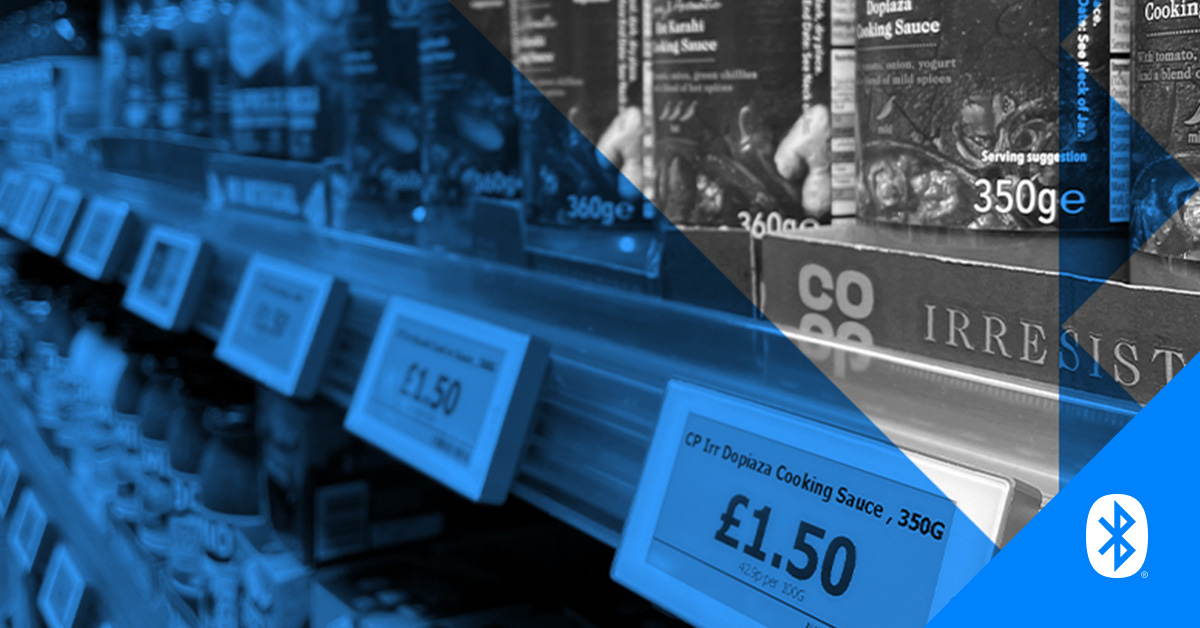



![Periodic Advertising with Responses[1]](https://www.bluetooth.com/wp-content/uploads/2024/02/Periodic-Advertising-with-Responses1-660x345.png)



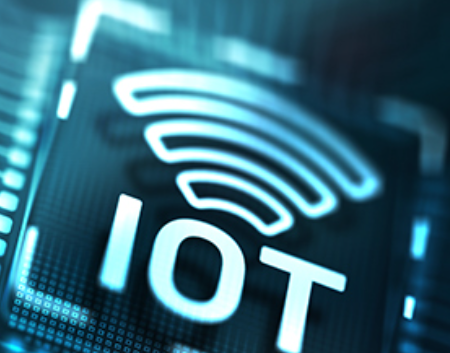
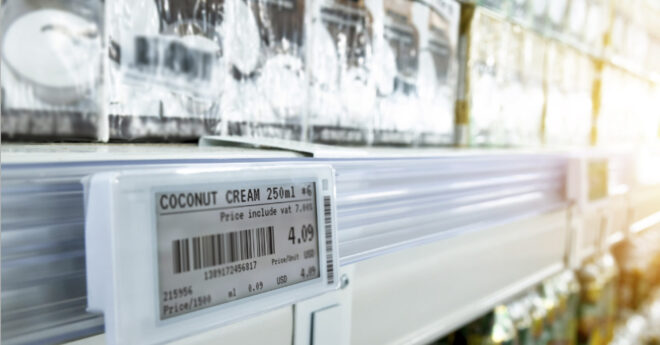
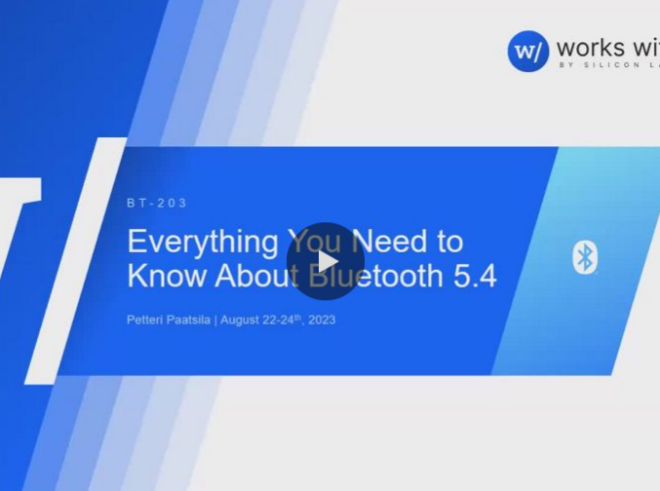
![hqdefault[1]](https://www.bluetooth.com/wp-content/uploads/2023/08/hqdefault1.jpg)

